Agency within Neighborhoods: Multi-Scalar Relations between Urban Form and Social Actors
Abstract
1. Introduction
Theoretical Premises
- Examine the composition of places by analyzing the relationships between material and human components within places and how these exert their influences.
- Account for historical processes and how the stabilization and destabilization of the social occur in order to understand persistence, continuity, and change.
- Analyze different scales of relationships between parts and the whole and between distant and local agencies.
- Investigate how groups are formed and redistributed. Expressive means produced and articulated during the processes of group formation and the stabilization of group identities are key to determining how the social is expressed in their physical form.
- Construct a narrative that effectively represents the variety of actors involved.
2. Materials and Methods
- Arnaout: Situated in the historic heart of the city, Arnaout has a rich history dating back to the Ottoman period. Originally a Turkish Cypriot neighborhood, it is now predominantly inhabited by Greek Cypriot refugees who were allocated Turkish Cypriot properties following the 1974 war. The area also includes Turkish Cypriots who have resettled here, as well as gypsies. Arnaout is known to have poor housing conditions, a high concentration of unskilled laborers, and a significantly high proportion of Cypriot nationals.
- Agios Nikolaos: This neighborhood exhibits typical social characteristics, with a substantial middle-class population and a mix of nationalities that align with the city’s average demographics. Its history is marked by the establishment of a Greek cemetery in 1865 and the witnessing of the construction of some of Limassol’s earliest workers’ housing. Residential development in Agios Nikolaos primarily occurred during the 1950s and 1960s.
- Dasoudi: Part of the larger Potamos Germasogeia quarter, Dasoudi is a renowned seaside tourism destination in Limassol that is also popular among the locals. While discussions about tourist development began in the late 1960s and early 1970s, it gained momentum after the 1974 war and continues to thrive. This area boasts a high concentration of higher-income groups and foreign nationals.
2.1. Spatial History
2.2. Descriptive Narrative
2.3. Synthesis
3. Results
3.1. Arnaout
3.2. Agios Nikolaos
3.3. Dasoudi
4. Discussion
5. Conclusions
Supplementary Materials
Author Contributions
Funding
Data Availability Statement
Acknowledgments
Conflicts of Interest
| 1 | Here, ‘agency’ is defined as the capacity to exert an influence on something. |
| 2 | Six conversations, in the form of semi-structured interviews, were held with local experts regarding the development of Limassol as part of a broader study; out of these, three (two former municipal planning officers and one historian) mentioned the case studies selected for this research. |
| 3 | Space syntax is both a theory and a method for quantitatively describing patterns of spatial layout and relating these patterns to social activities such as movement, behavior, and even social meaning and interpretation. Space syntax theory is based on the fundamental idea that space is an intrinsic aspect of human activity and that the social effects of urban space ensue from how the inter-relations between spaces combine to form a city as a whole [42]. Space syntax measures correlate with a variety of socio-economic characteristics in urban environments and, specifically, are representative of movement at different scales [43]. Within the scope of this paper, city-wide scales provide a description of how these neighborhoods are related to the city. |
| 4 | The analysis used in this study is angular segment analysis, which takes into account the least angular deviation of each street segment from all other segments. For further details of space syntax theory and methodology, see www.spacesyntax.org (accessed on 13 February 2024), along with Hillier and Hanson [42], Hillier [45], and van Nes and Yamu [46]. For details of angular analysis, see Hillier and Iida [44]. The spatial model was created based on the OpenStreetMap road center line, which was manually edited against contemporary Google and Bing map and satellite data in MapInfo software version 8.5. The analysis was performed using the DepthMap Process tool in the space syntax extension for MapInfo, developed and licensed by Space Syntax Ltd. |
| 5 | The data presented certain challenges. Approximately 5–10% of the building information had gaps, with a notably higher rate in the case of Arnaout. To address these gaps, the authors manually filled in missing data, often relying on assumptions drawn from historical maps for construction dates. These same historical maps were used for the diachronic space syntax analysis of the whole city in a broader study [38], providing the contextual information for the present research. |
| 6 | Specifically, the photographic survey took place on 19 December 2015 (Arnaout), 15 December 2016 (Agios Nikolaos), and 4 June 2016 (Dasoudi). |
| 7 | It should, of course, be noted that the first four periods of analysis (1883–1974) span a much longer time than the last four (1974–2014). Furthermore, the area is relatively peripheral in the spatial models, and an edge effect may impact the values as the extent of the historical models is dictated by the extent of the available historical cartography. However, this effect is partly ‘natural’ since the area is delimited to the east by the Germasogia River, with the only crossing point until 1987 being the coastal road. The model for 2014 is based on digital cartography and, therefore, includes the area to the east of Dasoudi, including a new connection over the river just to the north of the area; the values all show a slight increase at this point. |
| 8 | The 20% coverage of the digital archives was extensive for major newspapers and more restricted for other newspapers; it also focused on the years of significant historical events, such as the World Wars, the establishment of the Republic of Cyprus, and the 1974 war. |
References
- Wacquant, L. Urban Outcasts: A Comparative Sociology of Advanced Marginality. In Towards a Sociology of Advanced Marginality; Polity Press: Cambridge, UK, 2008. [Google Scholar]
- Levy, A. Urban morphology and the problem of the modern urban fabric: Some questions for research. Urban Morphol. 1999, 3, 79–85. [Google Scholar] [CrossRef]
- Maloutas, T.; Souliotis, N. Living with Diversity. Divercities 2015. [Google Scholar] [CrossRef]
- Kolluoğlu, B.; Toksöz, M. Mapping Out the Eastern Mediterranean: Toward a Cartography of Cities of Commerce. In Cities of the Mediterranean: From the Ottomans to the Present Day; Kolluoğlu, B., Toksöz, M., Eds.; I.B. Tauris: London, UK, 2009; pp. 1–13. [Google Scholar]
- Kropf, K. Aspects of Urban Form. Urban Morphol. 2009, 13, 105–120. [Google Scholar] [CrossRef]
- Oliveira, V.; Pinho, P.; Batista, L.; Patatas, T.; Monteiro, C. (Eds.) Our Common Future in Urban Morhology; FEUP: Porto, Portugal, 2014. [Google Scholar]
- Zhang, Y. Morphologue: The Bartlett Urban Morphology Group Workshop. Urban Morphol. 2015, 19, 167–168. [Google Scholar]
- DeLanda, M. A New Philosophy of Society: Assemblage Theory and Social Complexity; Continuum: London, UK, 2006. [Google Scholar]
- Latour, B. Reassembling the Social: An Introduction to Actor-Network-Theory; OUP: Oxford, UK, 2005. [Google Scholar]
- Bolay, J.-C. Slums and Urban Development: Questions on Society and Globalisation. Eur. J. Dev. Res. 2006, 18, 284–298. [Google Scholar] [CrossRef]
- Gad, C.; Jensen, C.B. On the Consequences of Post-ANT. Sci. Technol. Hum. Values 2010, 35, 55–80. [Google Scholar] [CrossRef]
- Yates, M.; Cheng, W. North American Markets: Predicting Metropolitan Growth; CSCA: Toronto, ON, Canada, 2002. [Google Scholar]
- Tsenkova, S. Beyond transitions: Understanding urban change in post-socialist cities. In The Urban Mosaic of Post-Socialist Europe: Space, Institutions and Policy; Springer: Berlin/Heidelberg, Germany, 2006; pp. 21–50. [Google Scholar]
- Roux, A.V.D.; Mair, C. Neighborhoods and health. Ann. N. Y. Acad. Sci. 2010, 1186, 125–145. [Google Scholar] [CrossRef] [PubMed]
- Hillier, B.; Vaughan, L. The City as One Thing. Prog. Plan. 2007, 67, 205–230. [Google Scholar] [CrossRef]
- Westin, S. The Paradoxes of Planning A Psycho-Analytical Perspective. In New Directions in Planning Theory; Routledge: London, UK; New York, NY, USA, 2016. [Google Scholar]
- Naik, N.; Kominers, S.D.; Raskar, R.; Glaeser, E.L.; Hidalgo, C.C. Do People Shape Cities, or Do Cities Shape People? The Co-Evolution of Physical, Social, and Economic Change in Five Major U.S. Cities. SSRN Electron. J. 2015. [Google Scholar] [CrossRef]
- Simmel, G. The Stranger. In Urban Culture: Critical Concepts in Literary and Cultural Studies; Jenks, C., III, Ed.; Routledge: London, UK; New York, NY, USA, 2004; pp. 73–77. [Google Scholar]
- Lefebvre, H. The Production of Space; Blackwell Publishing: Oxford, UK, 1991. [Google Scholar]
- Logan, J.R.; Molotch, H. Urban Fortunes: The Political Economy of Place; University of California Press: Berkeley, CA, USA, 2007. [Google Scholar]
- Larkham, P.J. Agents and Agency in the Urban Landscape. In J.W.R. Whitehand and the Historico-Geographical Approach to Urban Morphology; Oliveira, V., Ed.; Springer International Publishing: Cham, Switzerland, 2019; pp. 67–90. [Google Scholar] [CrossRef]
- Batty, M. The New Science of Cities; MIT Press: Cambridge, MA, USA, 2013. [Google Scholar]
- Anderson, B.; Kearnes, M.; McFarlane, C.; Swanton, D. On assemblages and geography. Dialogues Hum. Geogr. 2012, 2, 171–189. [Google Scholar] [CrossRef]
- Farias, I. Decentring the object of urban studies. In Urban Assemblages: How Actor-Network Theory Changes Urban Studies; Routledge: New York, NY, USA, 2010; pp. 1–24. [Google Scholar]
- Jacobs, J.M. Urban geographies I: Still thinking cities relationally. Prog. Hum. Geogr. 2012, 36, 412–422. [Google Scholar] [CrossRef]
- McFarlane, C. Assemblage and critical urbanism. City 2011, 15, 204–224. [Google Scholar] [CrossRef]
- Cvetinovic, M.; Nedovic-Budic, Z.; Bolay, J.-C. Decoding urban development dynamics through actor-network methodological approach. Geoforum 2017, 82, 141–157. [Google Scholar] [CrossRef]
- Sayes, E. Actor–Network Theory and methodology: Just what does it mean to say that nonhumans have agency? Soc. Stud. Sci. 2014, 44, 134–149. [Google Scholar] [CrossRef] [PubMed]
- Müller, M.; Schurr, C. Assemblage thinking and actor-network theory: Conjunctions, disjunctions, cross-fertilisations. Trans. Inst. Br. Geogr. 2016, 41, 217–229. [Google Scholar] [CrossRef]
- Lilley, K.D. Urban Morphology. In International Encyclopedia of Human Geography; Kitchin, R., Thrift, N., Eds.; Elsevier: Oxford, UK, 2009; pp. 66–69. [Google Scholar] [CrossRef]
- Whitehand, J.W.R.; Whitehand, S.M. The Physical Fabric of Town Centres: The Agents of Change. Trans. Inst. Br. Geogr. 1984, 9, 231–247. [Google Scholar] [CrossRef]
- Whitehand, J.W.R. Recent Advances in Urban Morphology. Urban Stud. 1992, 29, 619–636. [Google Scholar] [CrossRef]
- Whitehand, J.W.R.; Morton, N.J. Urban morphology and planning: The case of fringe belts. Cities 2004, 21, 275–289. [Google Scholar] [CrossRef]
- Whitehand, J.W.R.; Morton, N.J. The Fringe-belt Phenomenon and Socioeconomic Change. Urban. Stud. 2006, 43, 2047–2066. [Google Scholar] [CrossRef]
- Essex, S.; Brayshay, M. Vision, vested interest and pragmatism: Who re-made Britain’s blitzed cities? Plan. Perspect. 2007, 22, 417–441. [Google Scholar] [CrossRef]
- Charalambous, N.; Geddes, I. Spatial Memory and Shifting Centrality. In Suburban Urbanites: Suburbs and the Life of the High Street; Vaughan, L., Ed.; UCL Press: London, UK, 2015; pp. 77–103. [Google Scholar]
- Geddes, I. Limassol as a Social Assemblage: A Diachronic Analysis of Its Urban Form. Ph.D. Dissertation, University of Cyprus, Nicosia, Cyprus, 2017. [Google Scholar]
- Geddes, I. Understanding the Mechanisms and Impact of Growth on the Urban Form and Functioning of Cities: An Application to the Case of Limassol. Athens J. Mediterr. Stud. 2019, 6, 39–66. [Google Scholar] [CrossRef]
- Geddes, I. Redefining urban potential through a morphological perspective. In Proceedings of the 26th ISUF Conference: Cities as Assemblages, Nicosia, Cyprus, 2–6 July 2019; pp. 17–34. [Google Scholar]
- Bettencourt, M.A. The Kind of Problem a City Is; Santa Fe Institute: Santa Fe, NM, USA, 2013. [Google Scholar]
- CIA. Cyprus map showing the island country in the Mediterranean Sea. In The World Factbook; Central Intelligence Agency: Washington, DC, USA, 2021. [Google Scholar]
- Hillier, B.; Hanson, J. The Social Logic of Space; Cambridge University Press: Cambridge, UK, 1984. [Google Scholar]
- Hillier, B.; Penn, A.; Hanson, J.; Grajewsky, T.; Xu, J. Natural movement: Or, configuration and attraction in urban pedestrian movement. Environ. Plan. B Plan. Des. 1993, 20, 29–66. [Google Scholar] [CrossRef]
- Hillier, B.; Iida, S. Network and Psychological Effects in Urban Movement. In Spatial Information Theory; Cohn, A.G., Mark, D.M., Eds.; Springer: Berlin/Heidelberg, Germany, 2005; pp. 475–490. [Google Scholar] [CrossRef]
- Hillier, B. Space Is the Machine: A Configurational Theory of Architecture; Cambridge University Press: Cambridge, UK, 1996. [Google Scholar]
- van Nes, A.; Yamu, C. Introduction to Space Syntax in Urban Studies; Springer: Cham, Switzerland, 2021. [Google Scholar] [CrossRef]
- Akif, Ö.; Akif, S. Echoes from the Past: The Turkish Cypriot Community of Limassol and Its Heritage; Terra Cypria: Limassol, Cyprus, 2008. [Google Scholar]
- Charalambous, C. Kai me Tourkokyprious ta Evalan oi Tsigganoi; Fileleftheros: Nicosia, Cyprus, 2000; p. 32. [Google Scholar]
- Yper tis Axiopoiiseos tis Periochis ‘Dasoudiou’ to Epimelitirion Lemesou; Fileleftheros: Nicosia, Cyprus, 1970; p. 8.
- Drousiotou, A.S. Geto Dropis o Tourkomachalas tis Lemesou; Fileleftheros: Nikosia, Cyprus, 2003; p. 10. [Google Scholar]
- To Thema tis Touristikis Axiopoiiseos tis Periochis ‘Dasoudi’ Lemesou; Eleftheria: Nicosia, Cyprus, 1971; p. 8.
- Syndesmos tou Fysikou Perivallon Kai Alloi Organismoi Provainoun eis Eisigiseis dia tin Lemeson; Eleftheria: Nicosia, Cyprus, 1972; p. 6.
- Christou, K. To Miso Dasoudi tha Faei o KOT! Haravgi: Nicosia, Cyprus, 1977; p. 5. [Google Scholar]
- Drousiotou, A.S. To Milo tis Eridos! Fileleftheros: Nicosia, Cyprus, 1995; p. 8. [Google Scholar]
- CTO Violated Local and EU Laws with Dasoudi Deal; Cyprus Mail: Nicosia, Cyprus, 2011.
- Our View: CTO’s Plans to Develop Dasoudi Lacking Both Logic and Authority; Cyprus Mail: Nicosia, Cyprus, 2011.
- The Fight for a Forest Becomes a Fight for Power; Cyprus Mail: Nicosia, Cyprus, 2011.
- To ETEK zita na Ginei Architektonikos Diagonismos Gia tin Axiopoiisi tou Dasoudiou; Foni Lemesos: Foini, Cyprus, 2015.
- Stamatiou, G. To Dasoudi Lemesou Apotelei ena Pragmatiko Thisavro ston Paraliako Dromo tis Lemesou; Evdomadiea Lemesos: Limassol, Cyprus, 2015. [Google Scholar]
- Kritioti, M. Limassol, a Town in Transition. Master’s Dissertation, University College London, London, UK, 1988. [Google Scholar]
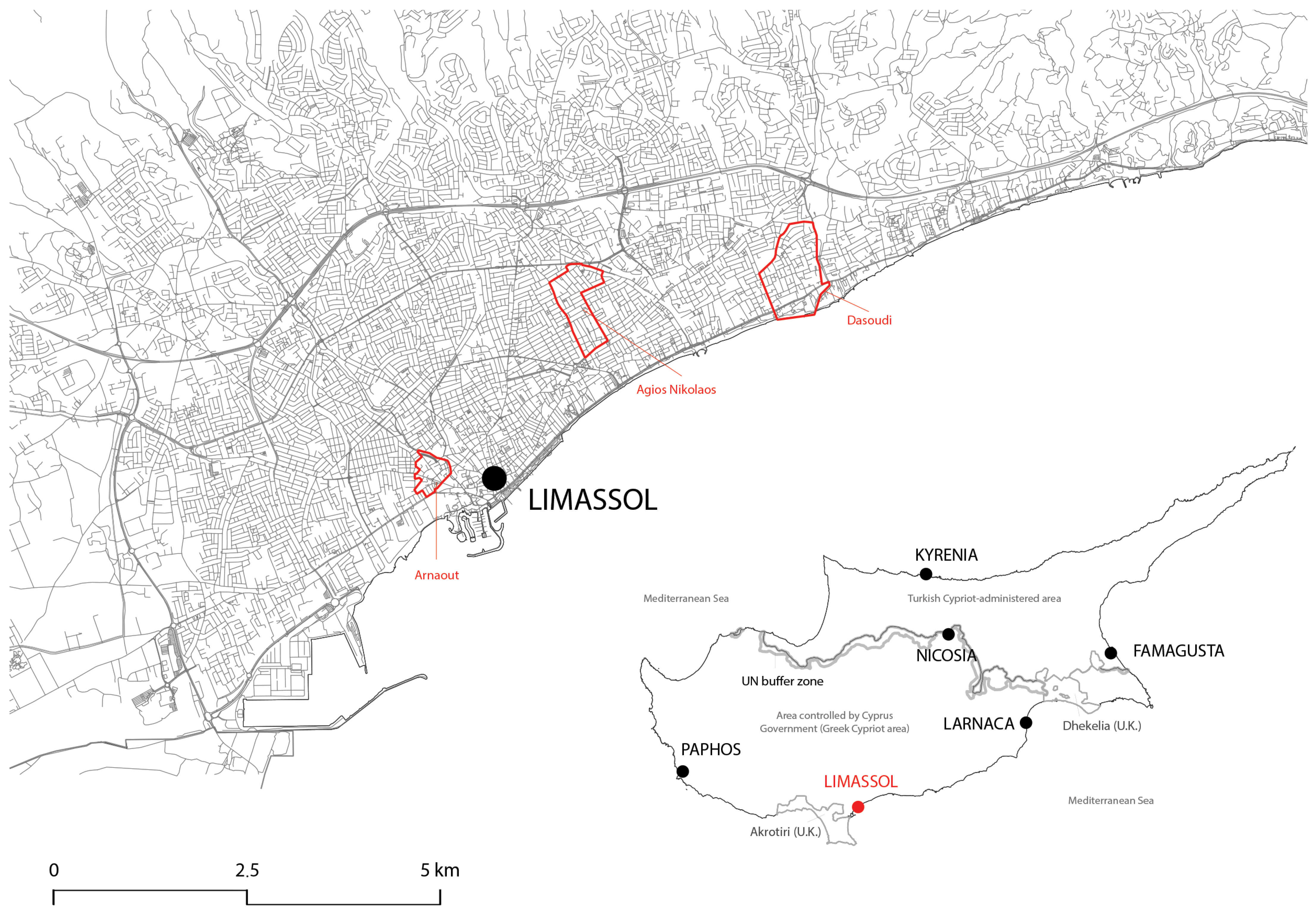
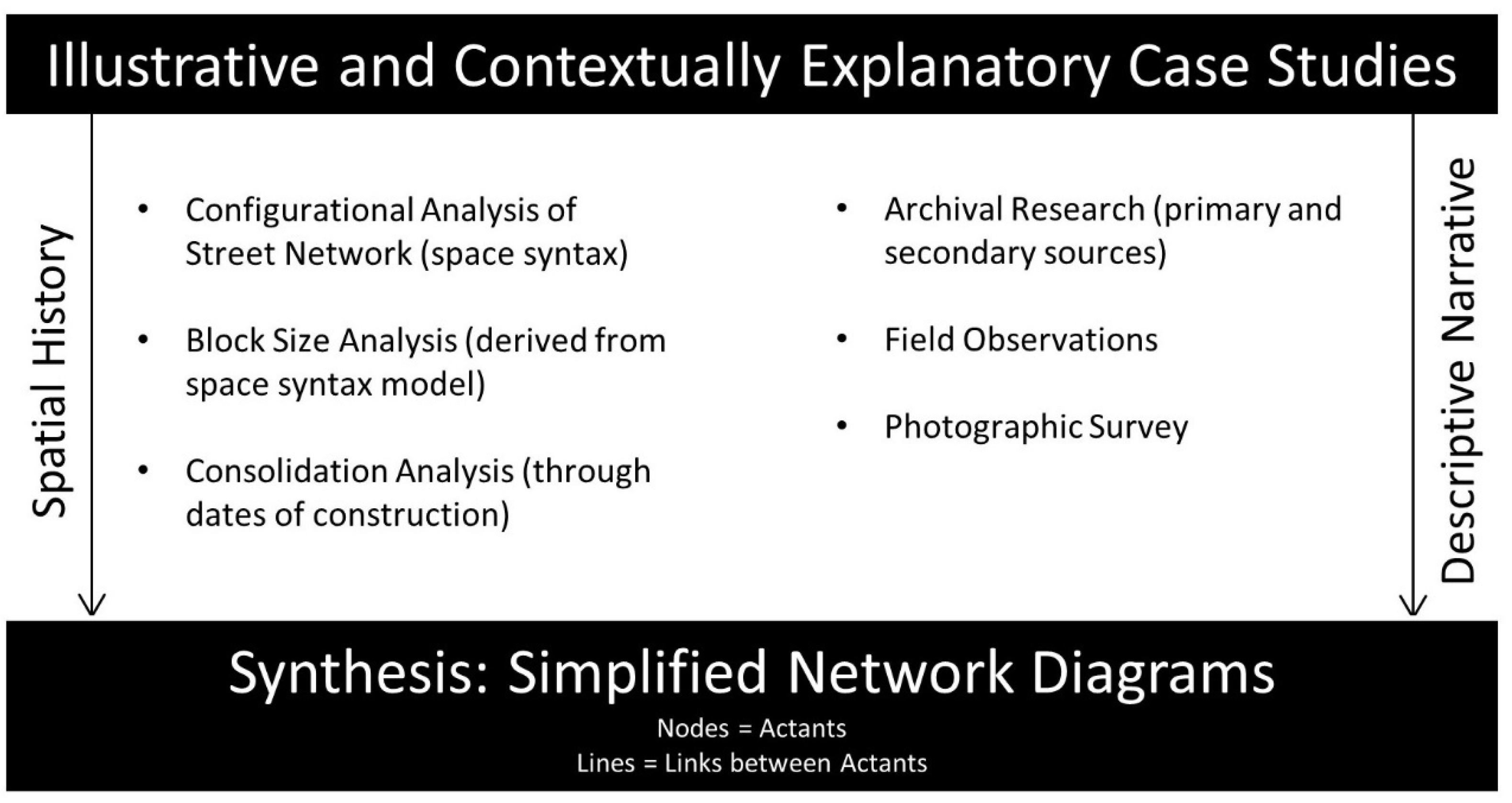
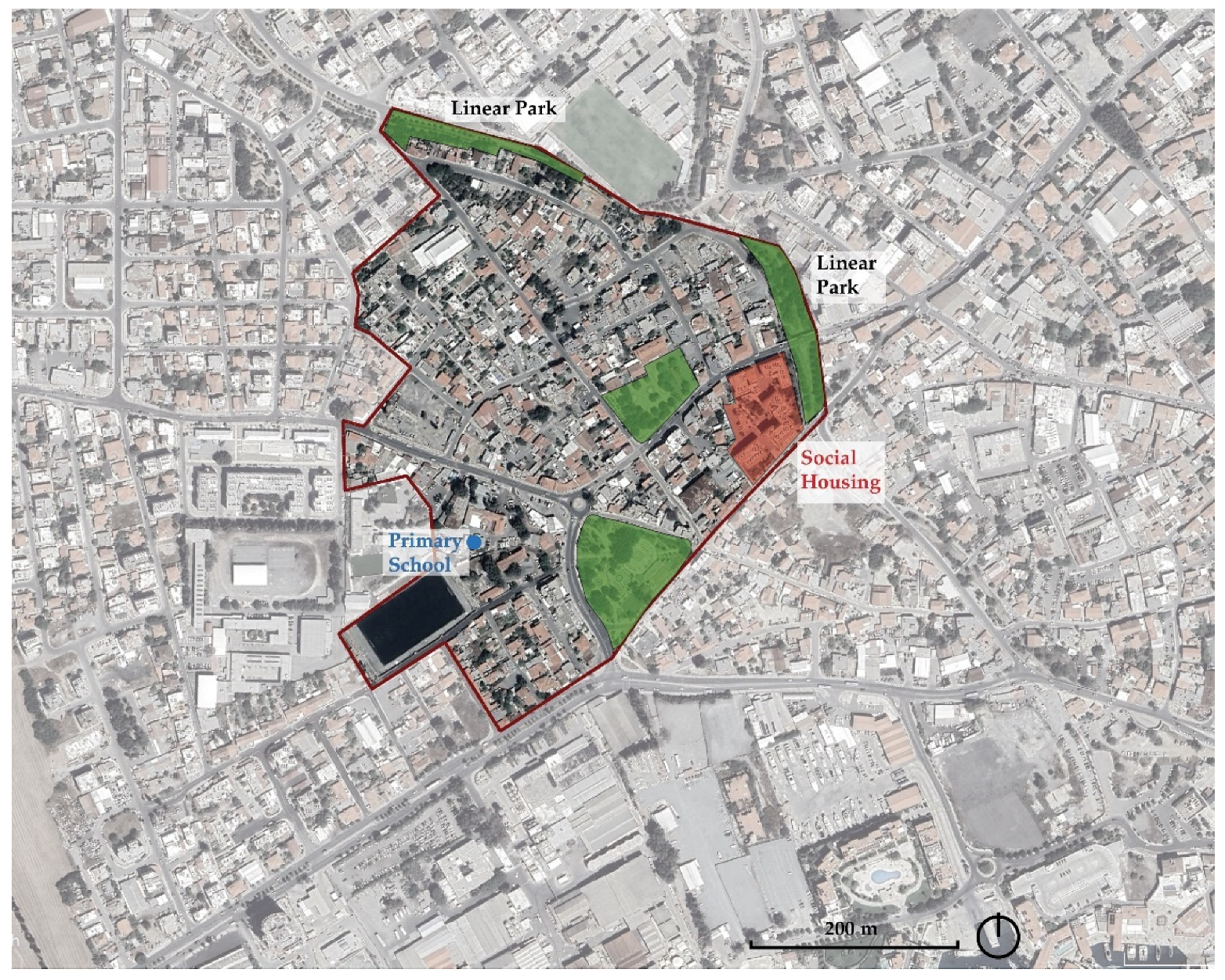


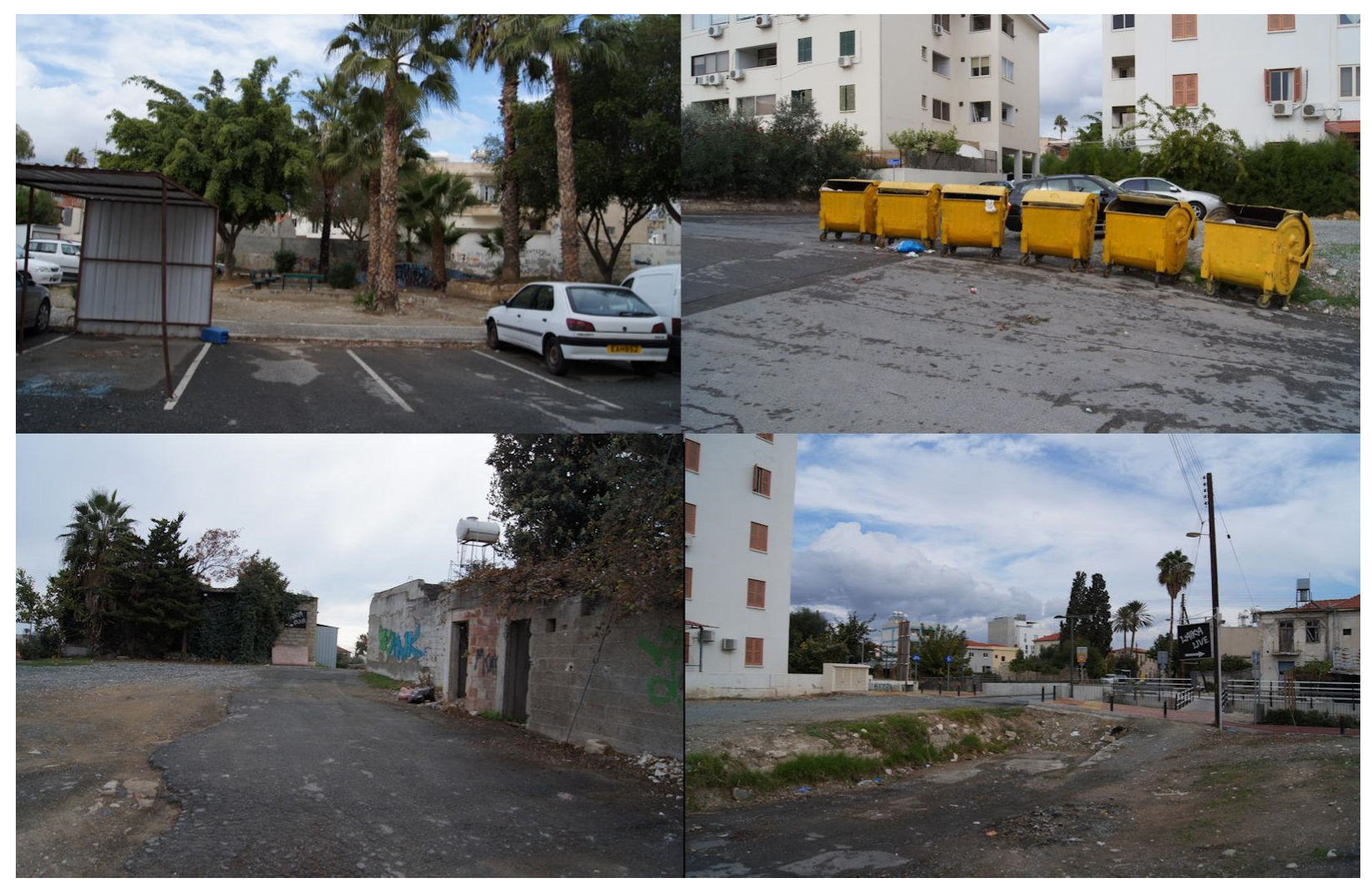
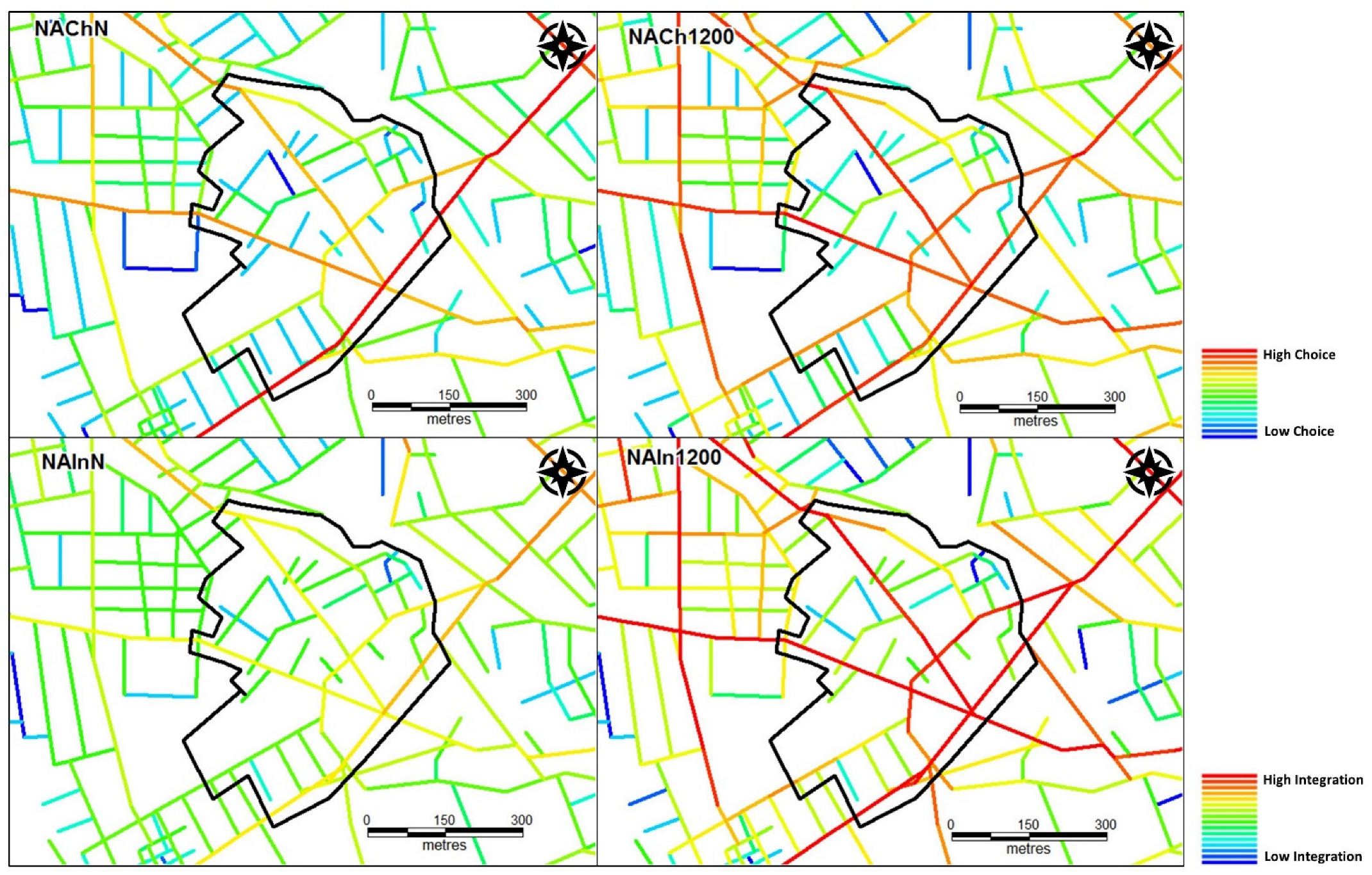
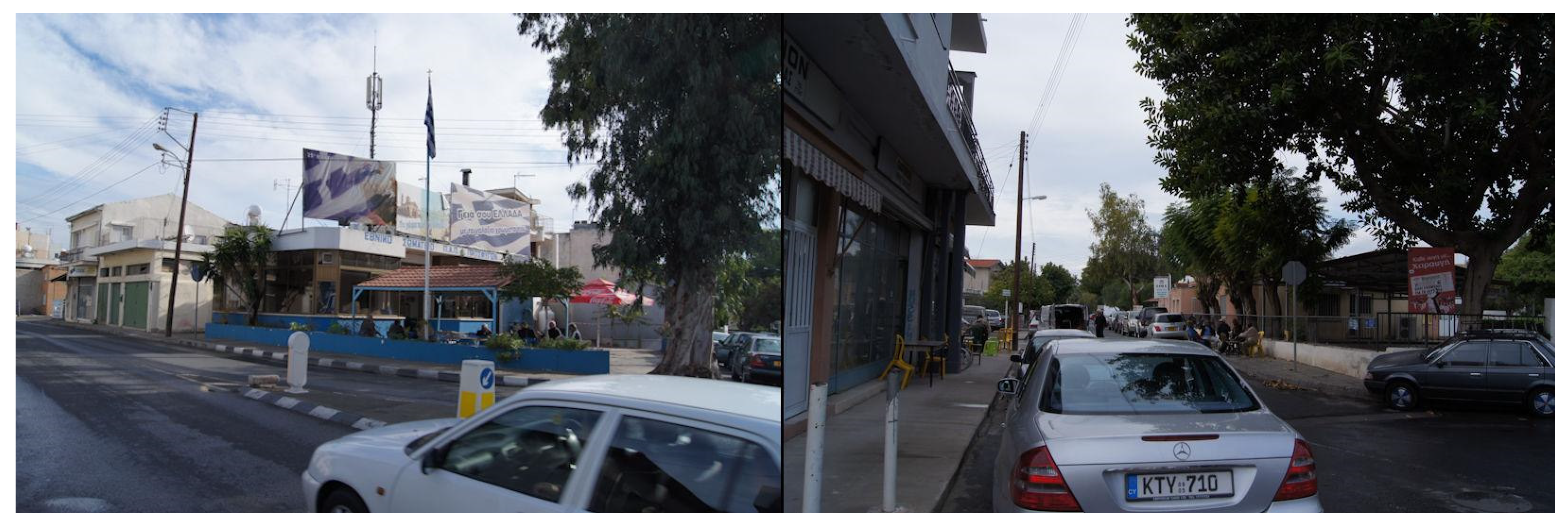
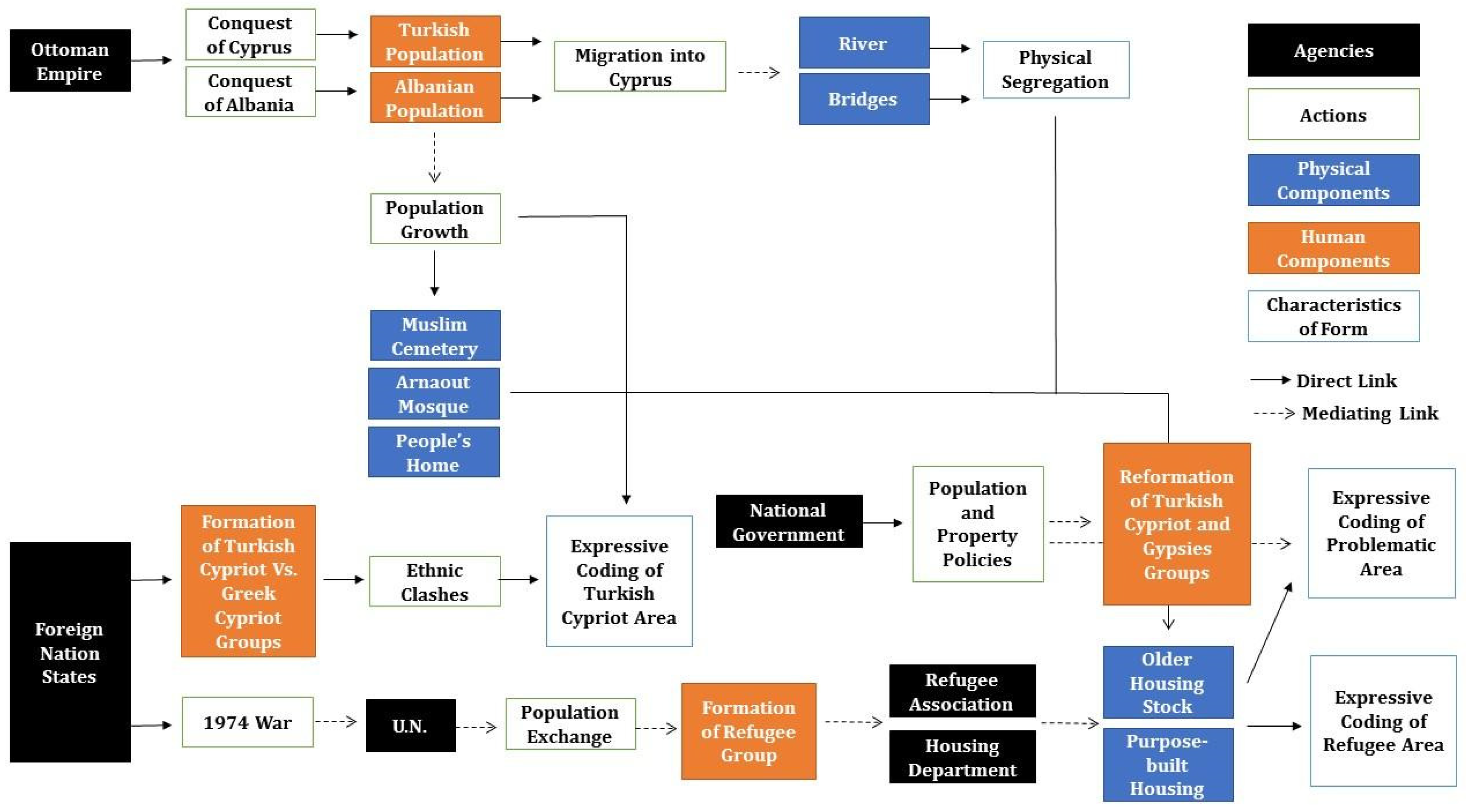
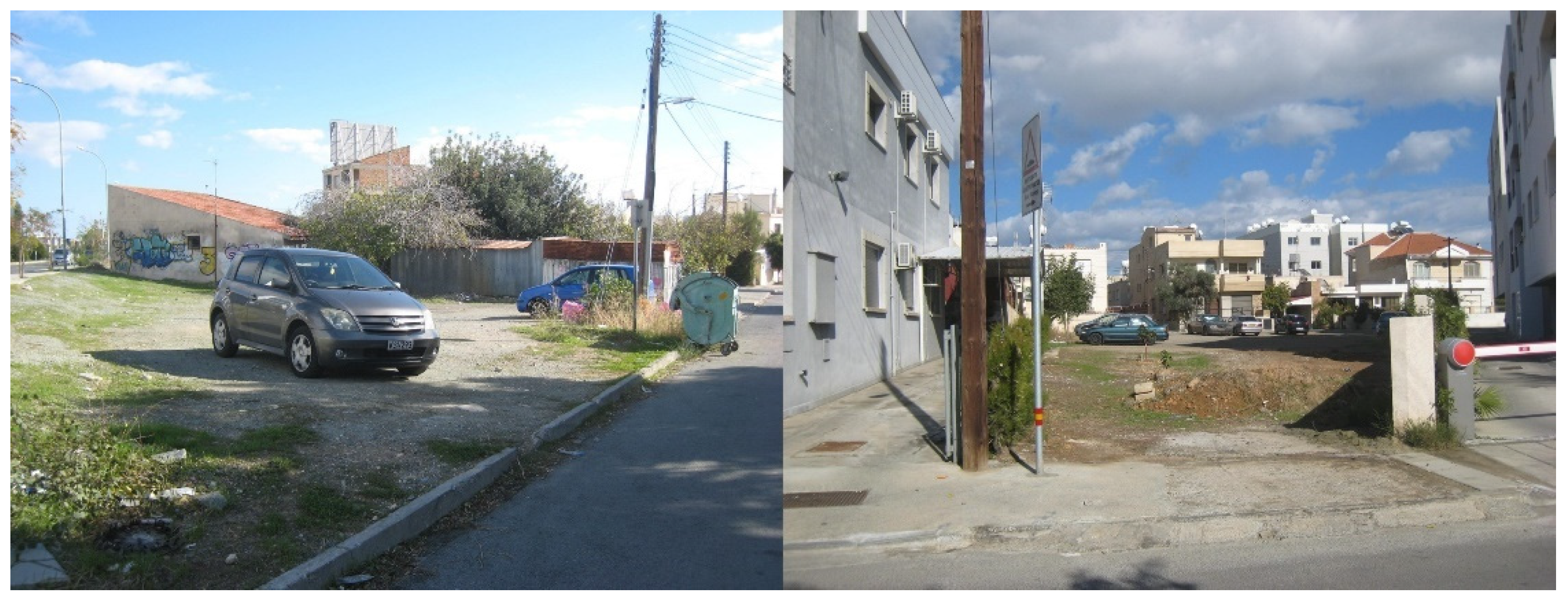

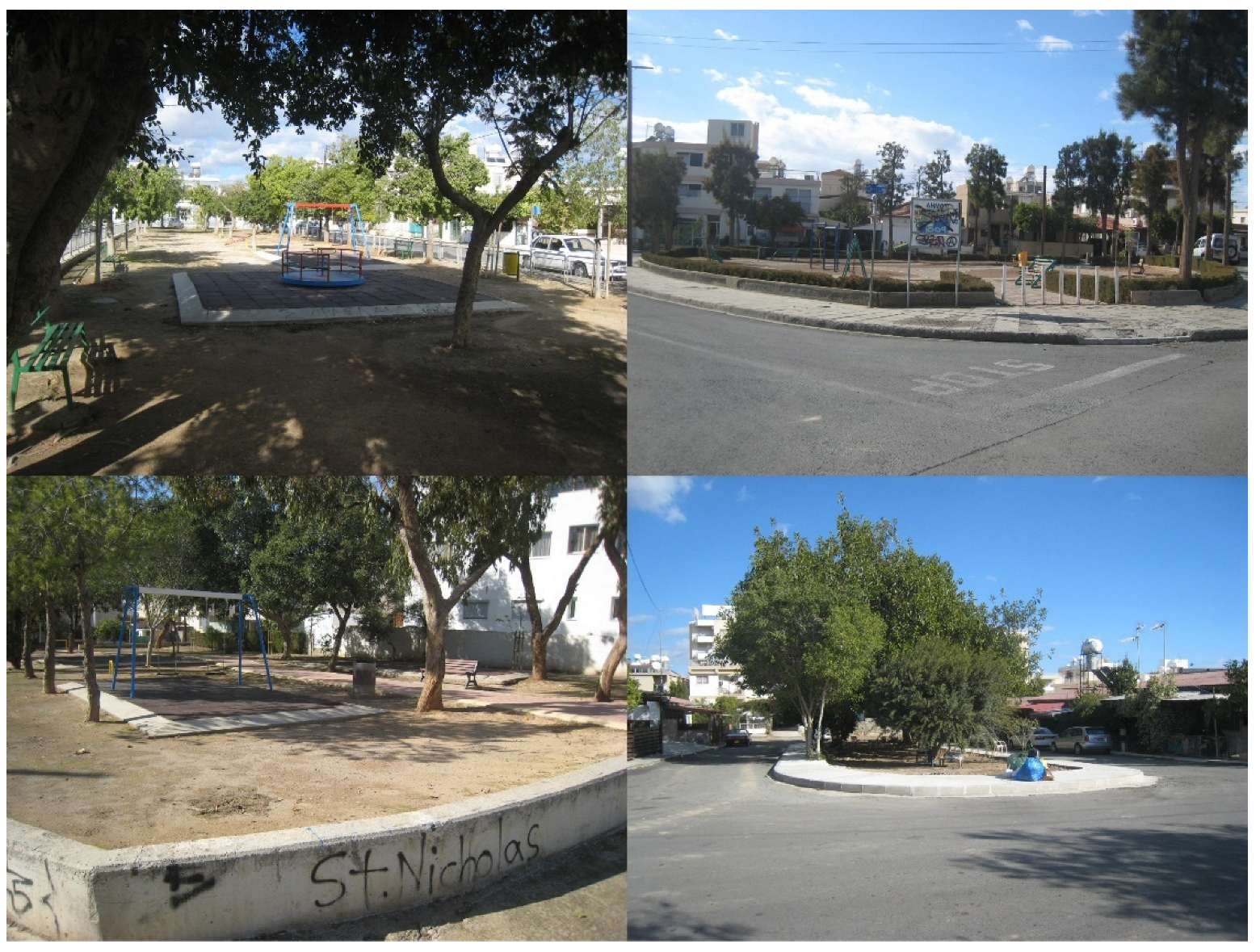
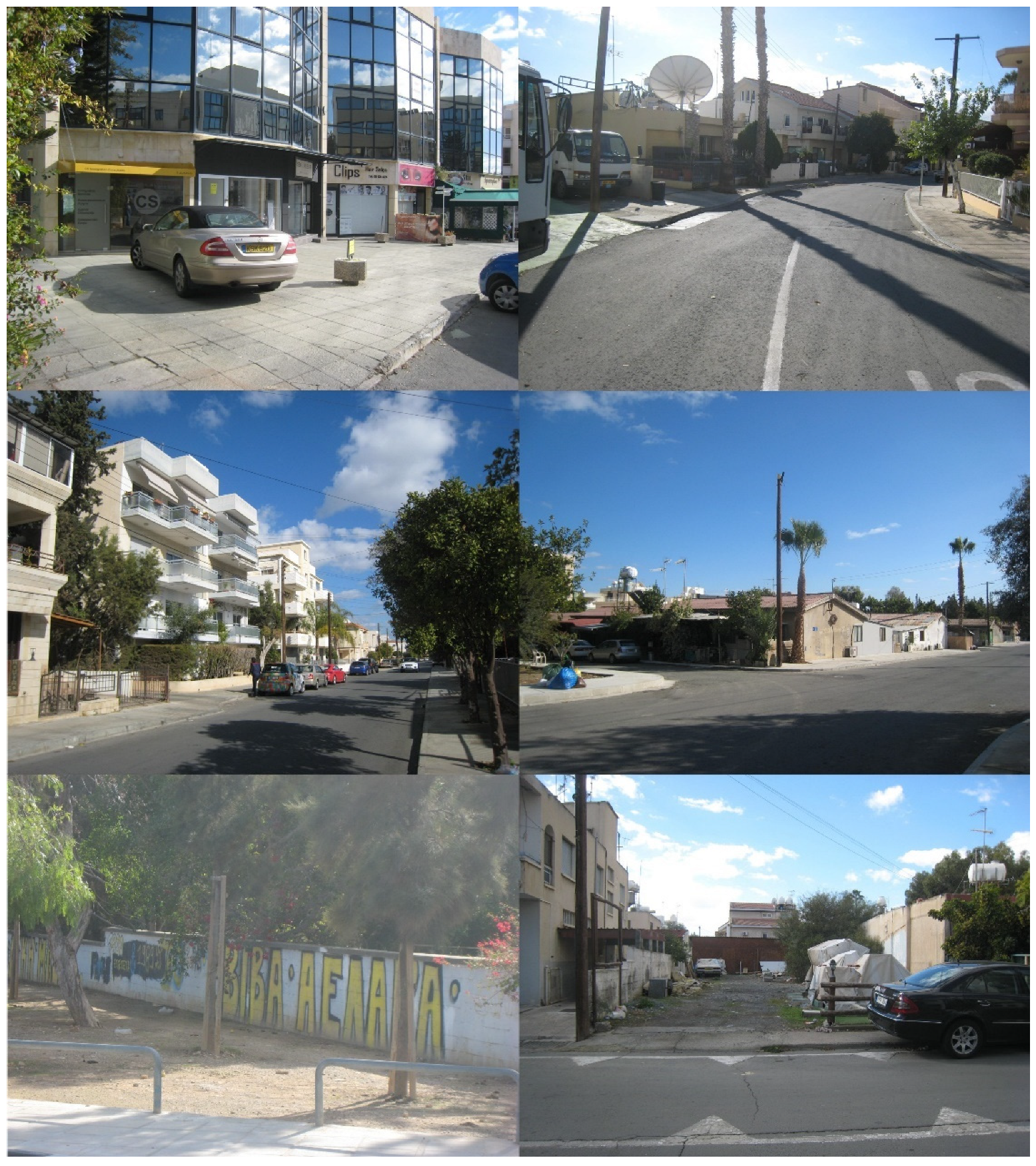
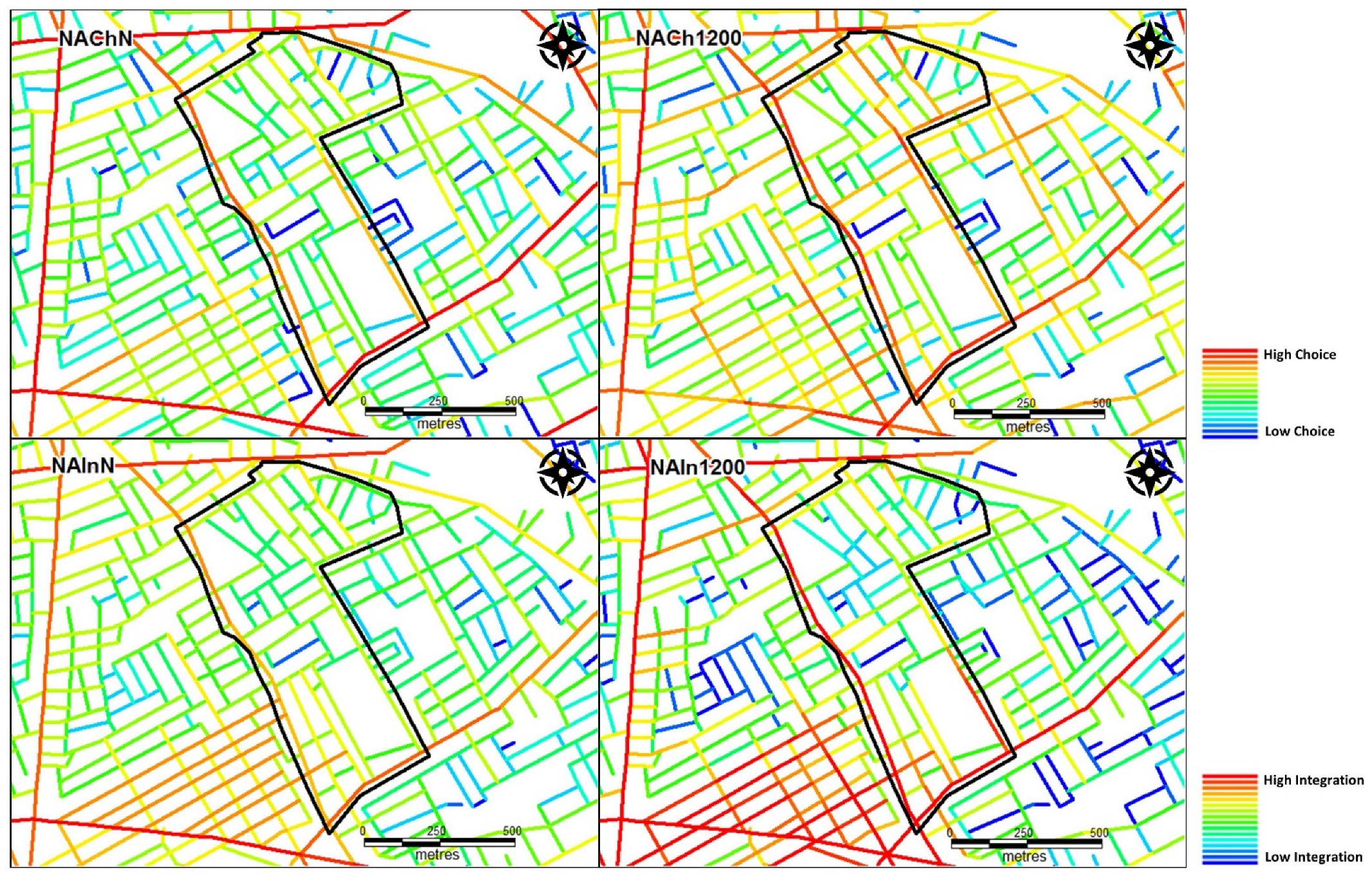

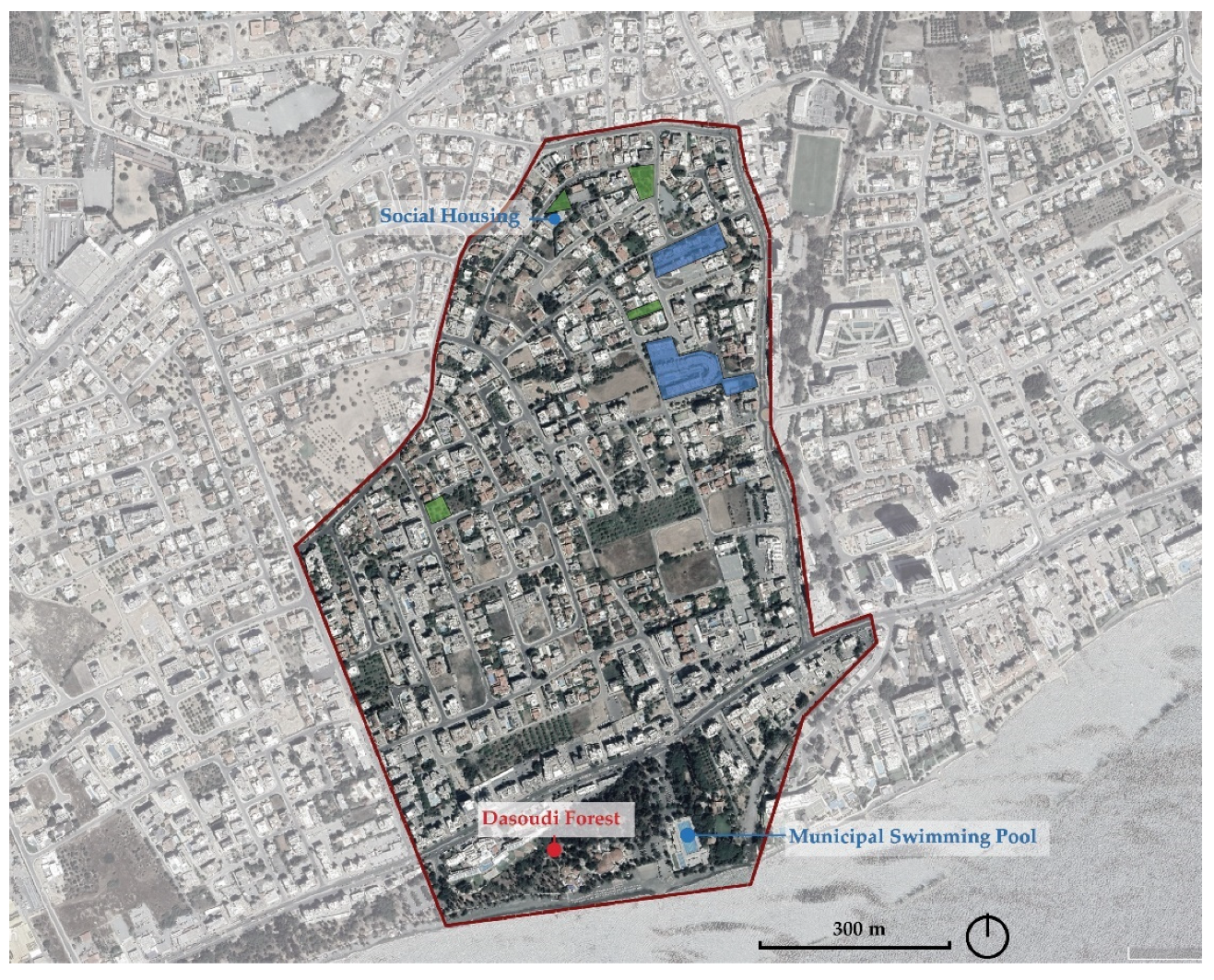

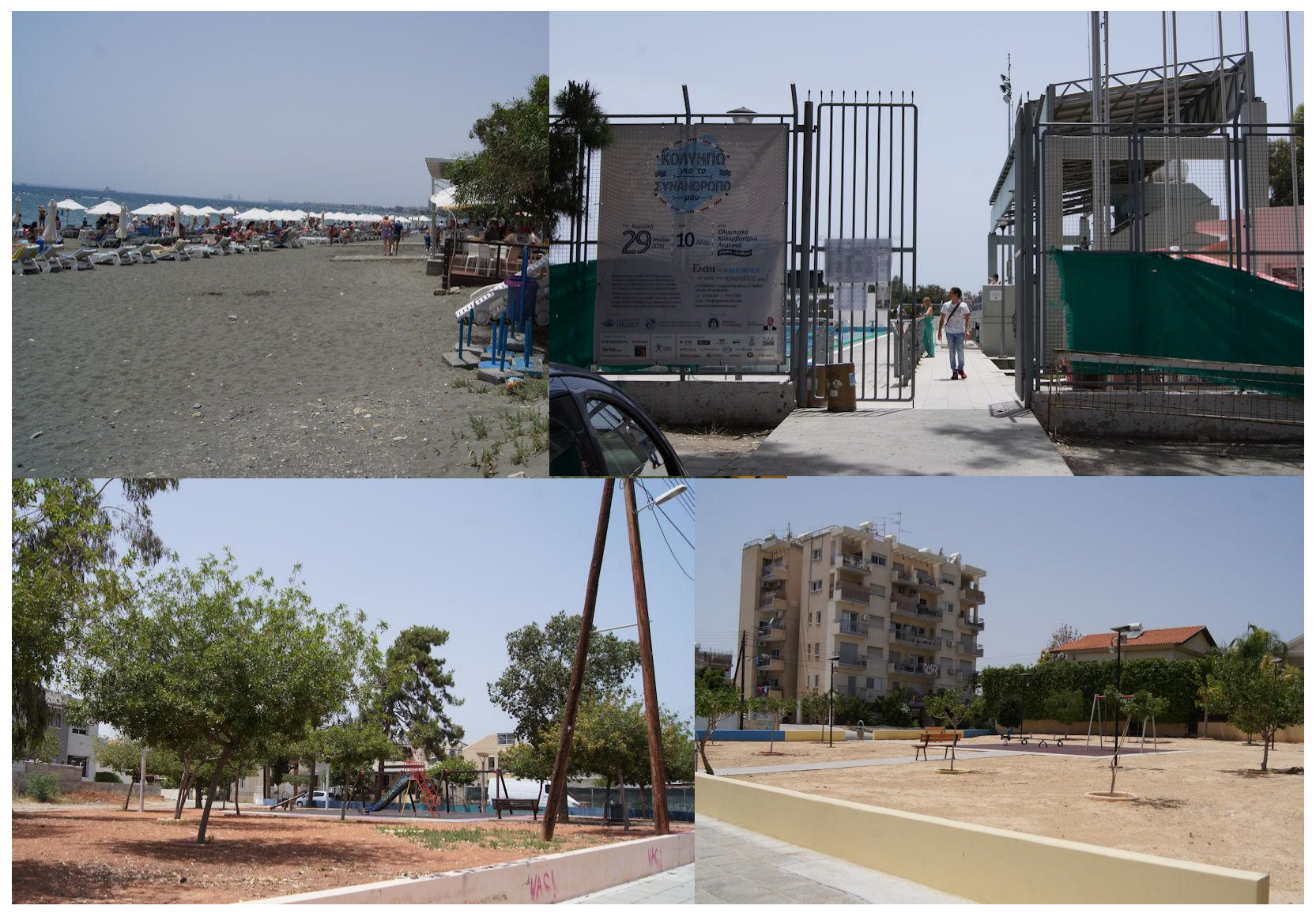
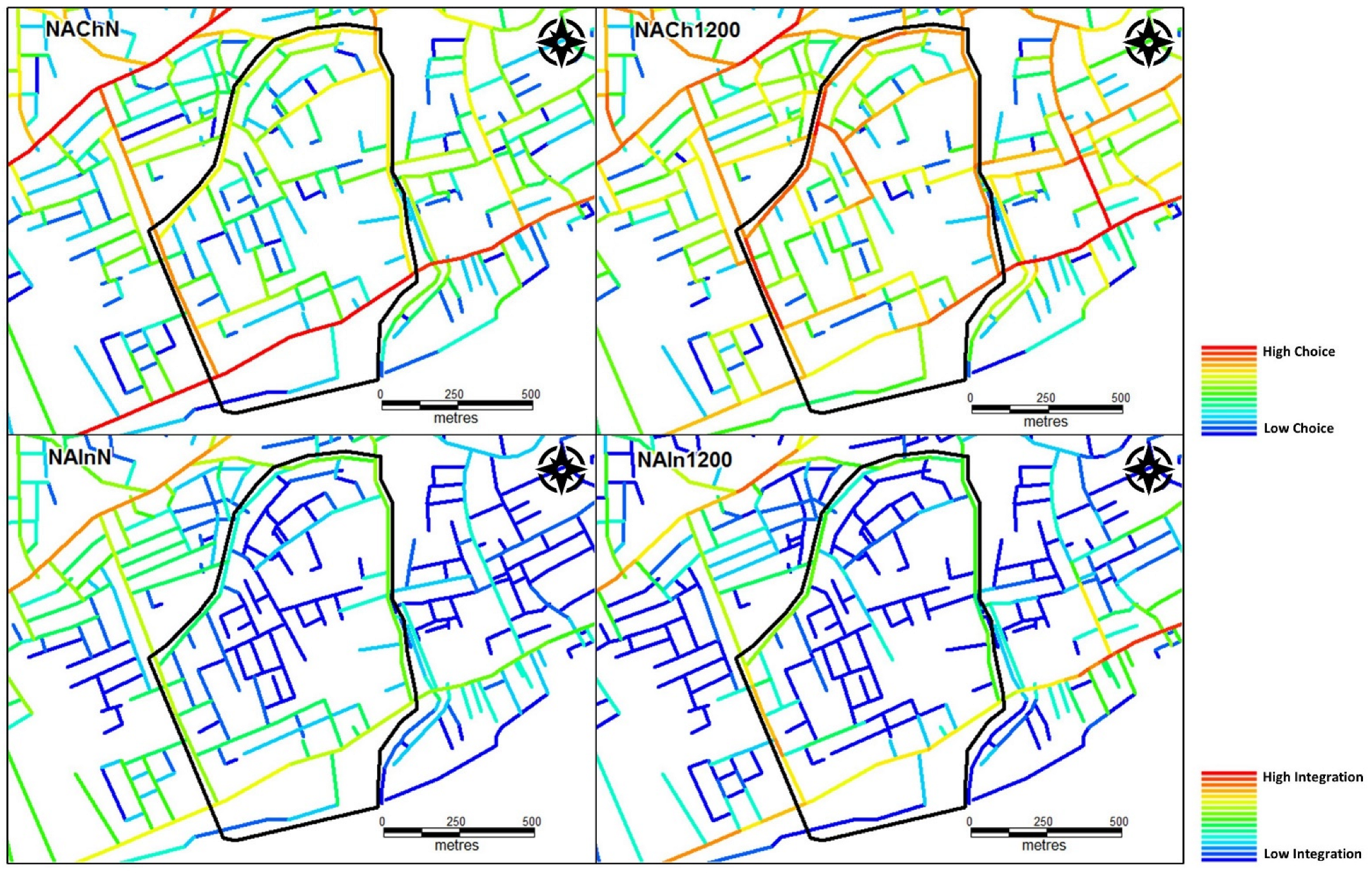
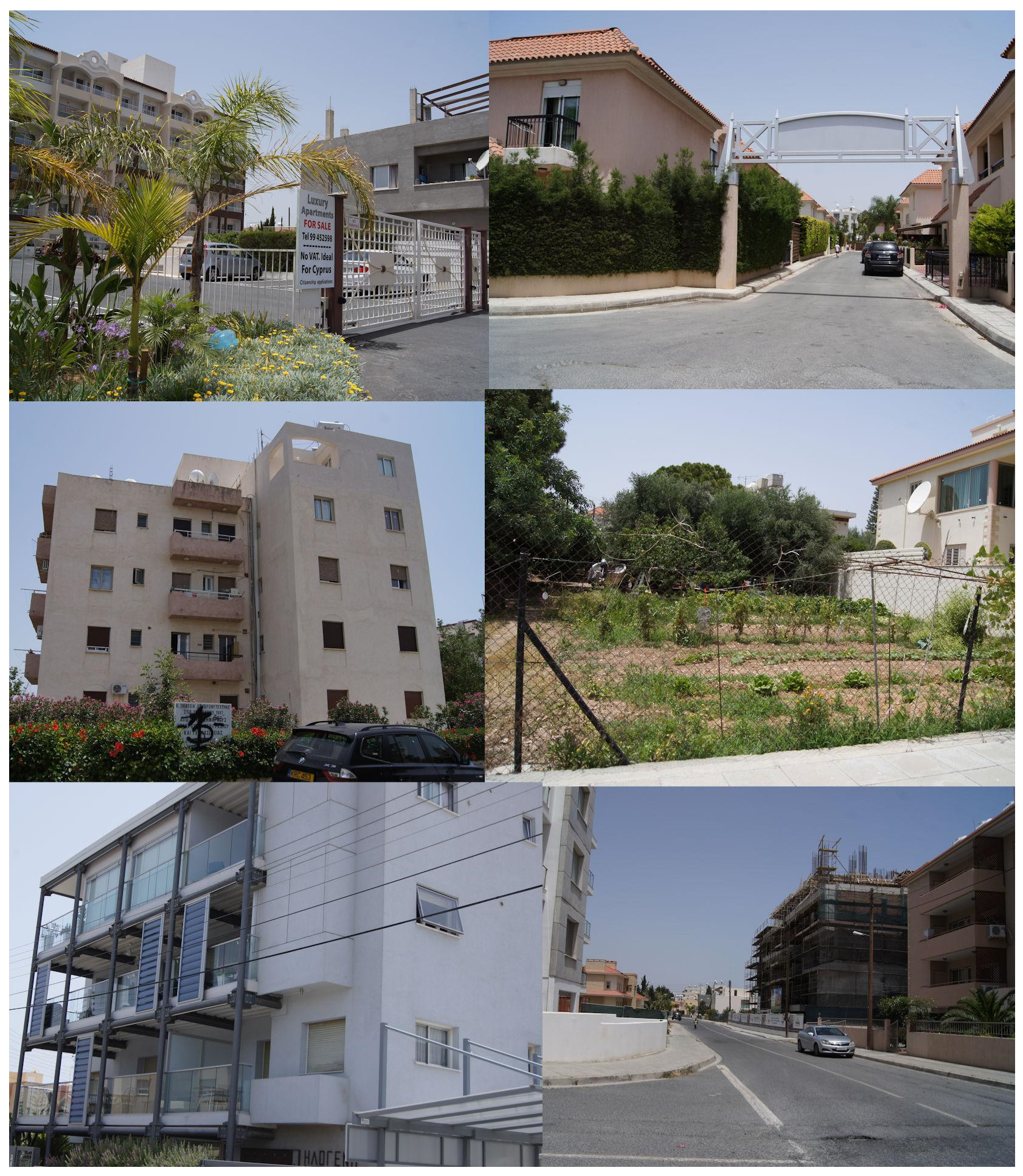
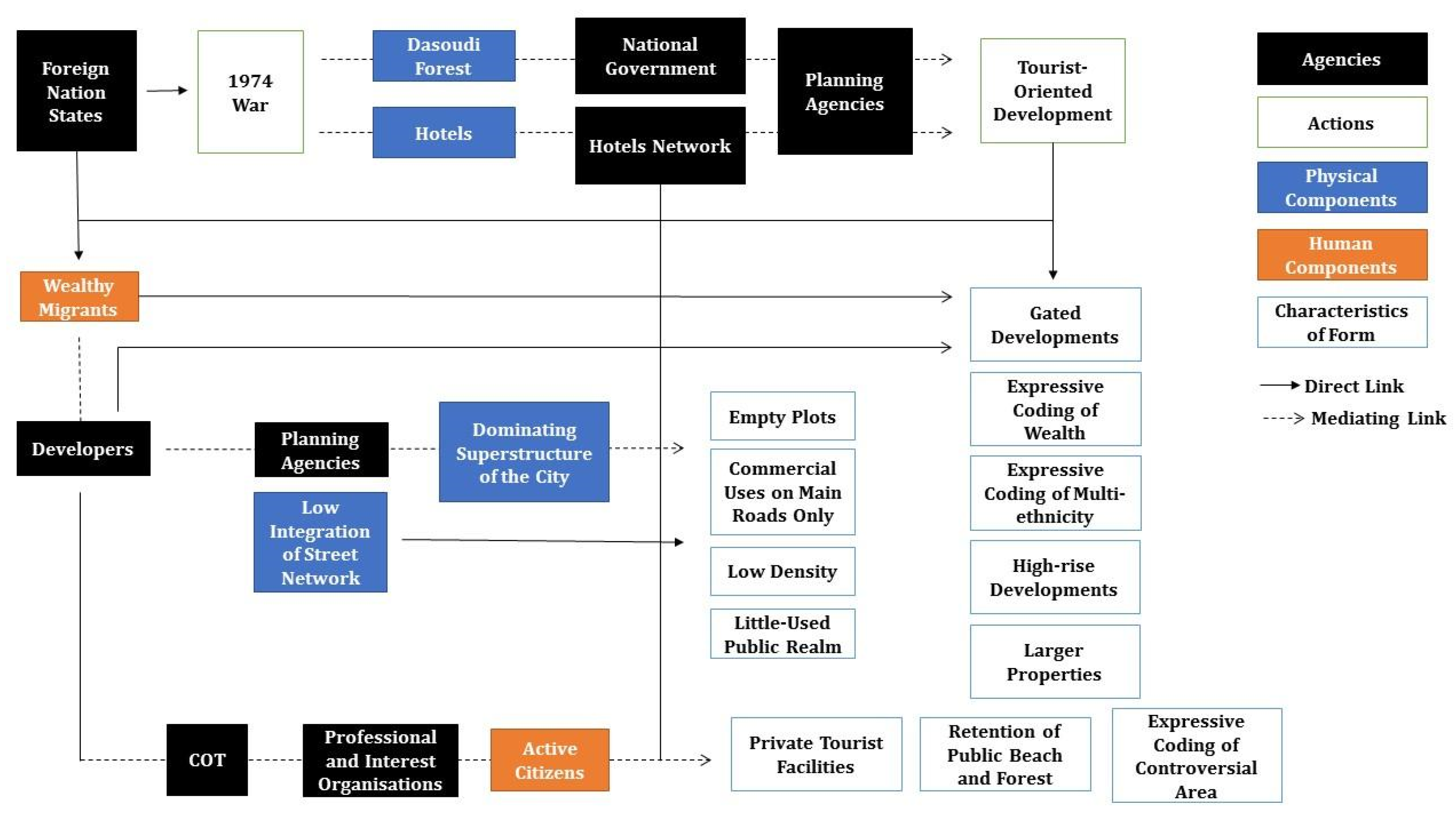
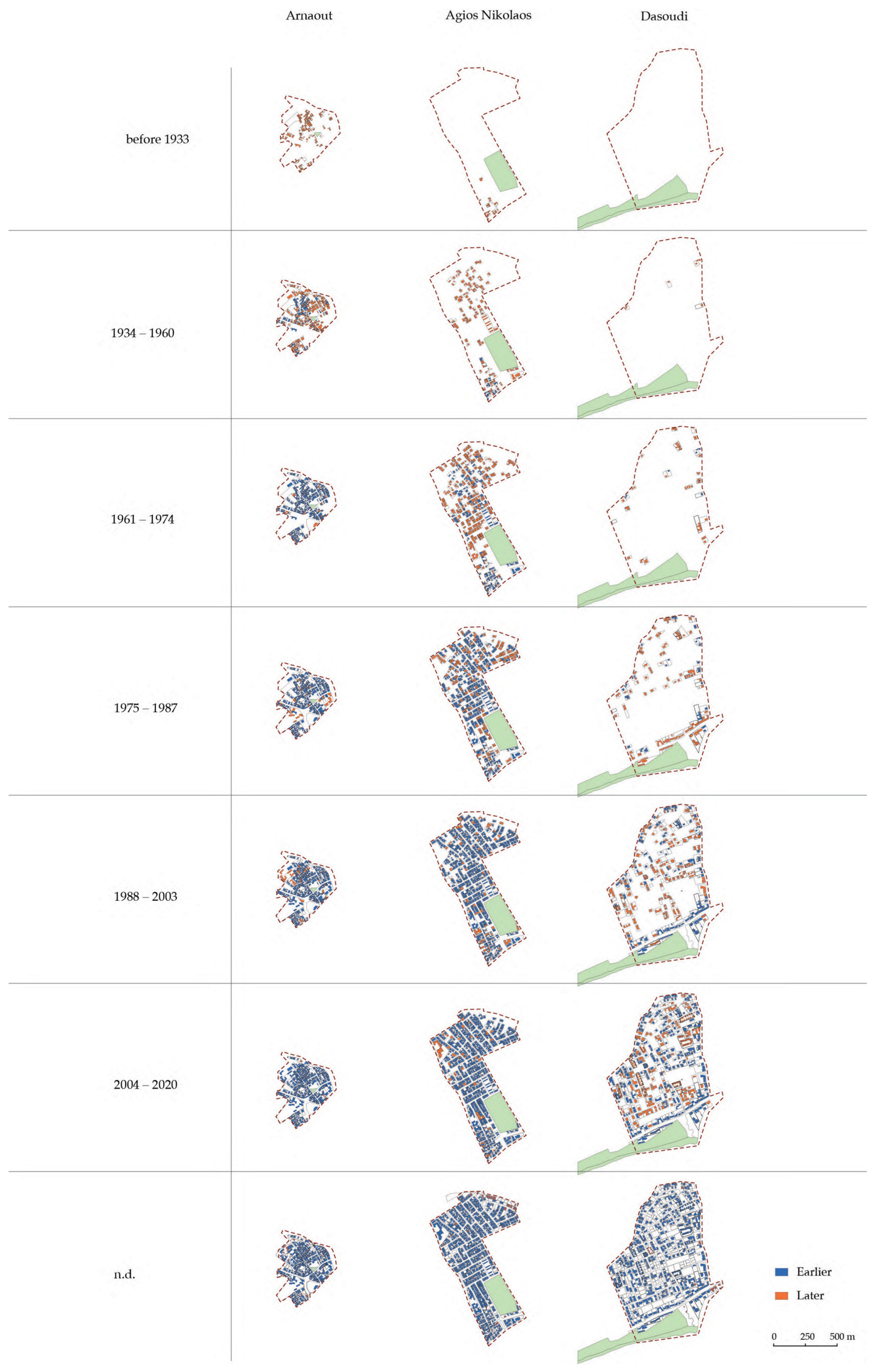
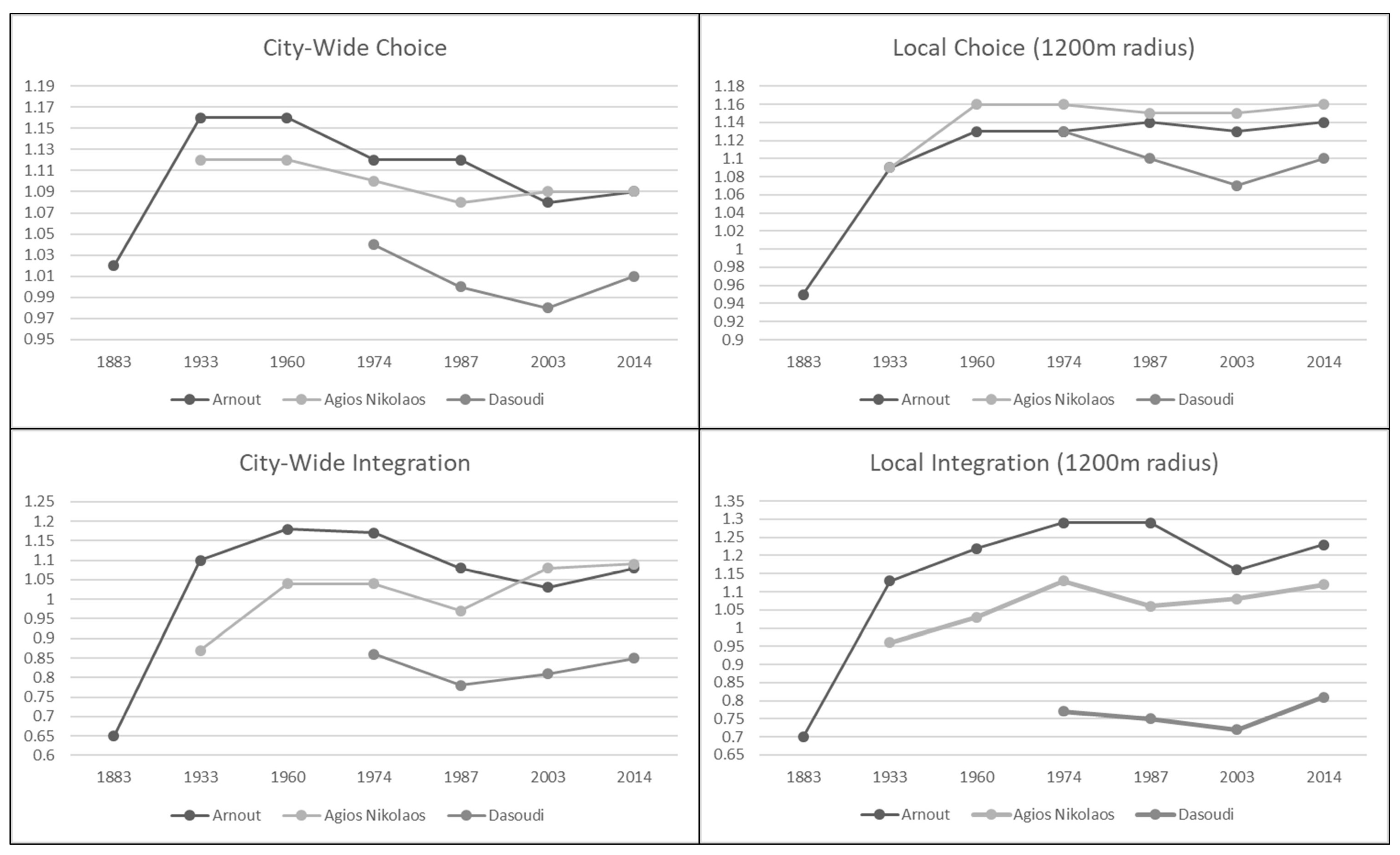
| Approach | Physical Features | Social Features | Spatial Relations | Human–Physical Relations | Temporal Relations |
|---|---|---|---|---|---|
| Historico-geographical | Site | Function | Street pattern | Social and economic context | Cyclical change |
| Town plan (street, plot, building) | Land use pattern | Plot pattern | |||
| Building pattern | |||||
| Process typological | Building | Cultural context | Aggregation | Intention | Derivation (cyclical reproduction, modification of form) |
| Urban tissue | Historical context | Construction | |||
| District | |||||
| City | |||||
| Configurational | Street | Use | Network structure | Perception | Cyclical growth |
| Open space | Occupation | Interconnectivity | Movement economy | Diversification | |
| Movement | Cultural context | ||||
| Spatial analytical | Plot | Use | Network structure | Flows | Feedback (continuous readjustment) |
| Parcel | |||||
| Census tract | |||||
| Built up area | |||||
| Route |
| Analytical Requirement | Relevant Approach/Methodology |
|---|---|
| How material and human elements are connected together | Configurational Process typological Spatial analytical |
| Historical process and temporal aspect | Historico-geographical Process typological |
| Different scales and the relationship of part-to-whole | Configurational Spatial analytical |
| How groups are formed and redistributed | Observations Photographic survey Archival research |
| A narrative where the variety of actors is represented | Archival research Description Emplotment |
| 1883 | 1933 | 1960 | 1974 | 1987 | 2003 | 2014 | |
|---|---|---|---|---|---|---|---|
| Case Study | mnNAChN | mnNAChN | mnNAChN | mnNAChN | mnNAChN | mnNAChN | mnNAChN |
| Arnaout | 1.02 | 1.16 | 1.16 | 1.12 | 1.12 | 1.08 | 1.09 |
| Agios Nikolaos | NA | 1.12 | 1.12 | 1.10 | 1.08 | 1.09 | 1.09 |
| Dasoudi | NA | NA | NA | 1.04 | 1.00 | 0.98 | 1.01 |
| Case Study | mnNACh1200 | mnNACh1200 | mnNACh1200 | mnNACh1200 | mnNACh1200 | mnNACh1200 | mnNACh1200 |
| Arnaout | 0.95 | 1.09 | 1.13 | 1.13 | 1.14 | 1.13 | 1.14 |
| Agios Nikolaos | NA | 1.09 | 1.16 | 1.16 | 1.15 | 1.15 | 1.16 |
| Dasoudi | NA | NA | NA | 1.13 | 1.10 | 1.07 | 1.10 |
| Case Study | mnNAInN | mnNAInN | mnNAInN | mnNAInN | mnNAInN | mnNAInN | mnNAInN |
| Arnaout | 0.65 | 1.10 | 1.18 | 1.17 | 1.08 | 1.03 | 1.08 |
| Agios Nikolaos | NA | 0.87 | 1.04 | 1.04 | 0.97 | 1.08 | 1.09 |
| Dasoudi | NA | NA | NA | 0.86 | 0.78 | 0.81 | 0.85 |
| Case Study | mnNAIn1200 | mnNAIn1200 | mnNAIn1200 | mnNAIn1200 | mnNAIn1200 | mnNAIn1200 | mnNAIn1200 |
| Arnaout | 0.70 | 1.13 | 1.22 | 1.29 | 1.29 | 1.16 | 1.23 |
| Agios Nikolaos | NA | 0.96 | 1.03 | 1.13 | 1.06 | 1.08 | 1.12 |
| Dasoudi | NA | NA | NA | 0.77 | 0.75 | 0.72 | 0.81 |
| Case Study | mnBlockSize M2 | mnBlockSize M2 | mnBlockSize M2 | mnBlockSize M2 | mnBlockSize M2 | mnBlockSize M2 | mnBlockSize M2 |
| Arnaout | NA | 17,495 | 15,835 | 16,448 | 11,713 | 10,314 | 11,528 |
| Agios Nikolaos | NA | NA | 8538 | 7759 | 7994 | 7779 | 7529 |
| Dasoudi | NA | NA | NA | 543,558 | 110,939 | 35,115 | 20,932 |
Disclaimer/Publisher’s Note: The statements, opinions and data contained in all publications are solely those of the individual author(s) and contributor(s) and not of MDPI and/or the editor(s). MDPI and/or the editor(s) disclaim responsibility for any injury to people or property resulting from any ideas, methods, instructions or products referred to in the content. |
© 2024 by the authors. Licensee MDPI, Basel, Switzerland. This article is an open access article distributed under the terms and conditions of the Creative Commons Attribution (CC BY) license (https://creativecommons.org/licenses/by/4.0/).
Share and Cite
Geddes, I.; Chatzichristou, C.; Charalambous, N.; Ricchiardi, A. Agency within Neighborhoods: Multi-Scalar Relations between Urban Form and Social Actors. Land 2024, 13, 269. https://doi.org/10.3390/land13030269
Geddes I, Chatzichristou C, Charalambous N, Ricchiardi A. Agency within Neighborhoods: Multi-Scalar Relations between Urban Form and Social Actors. Land. 2024; 13(3):269. https://doi.org/10.3390/land13030269
Chicago/Turabian StyleGeddes, Ilaria, Christakis Chatzichristou, Nadia Charalambous, and Ana Ricchiardi. 2024. "Agency within Neighborhoods: Multi-Scalar Relations between Urban Form and Social Actors" Land 13, no. 3: 269. https://doi.org/10.3390/land13030269
APA StyleGeddes, I., Chatzichristou, C., Charalambous, N., & Ricchiardi, A. (2024). Agency within Neighborhoods: Multi-Scalar Relations between Urban Form and Social Actors. Land, 13(3), 269. https://doi.org/10.3390/land13030269







